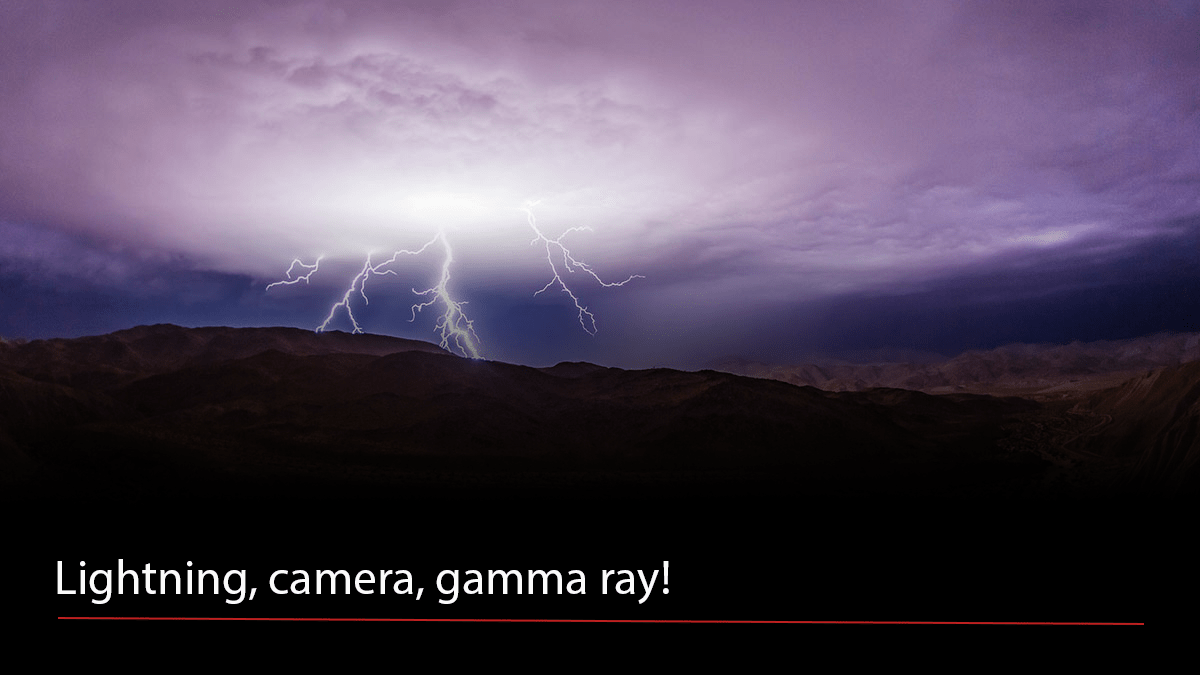
This page originally appeared on @THEU
In September 2021, an unprecedented thunderstorm blew across Utah’s West Desert. Lightning from this storm produced at least six gamma ray flashes that beamed downward to Earth’s surface and activated detectors at the University of Utah-led Telescope Array. The storm was noteworthy on its own—the array usually clocks one or two of the lightning-triggered gamma rays per year—but recent upgrades led to a new observation by the Telescope Array scientists and their lightning collaborators.
For the first time ever, they captured video footage of lightning-triggered downward terrestrial gamma-ray flashes (TGFs). A special camera running at 40,000 frames per second gave an unprecedented look at how gamma rays burst downwards to the Earth’s surface from cloud-to-ground lightning strikes. They found that not only were multiple gamma rays produced at later lightning stages than previously thought, but the rays were also associated with a pulse of optical light that had never been recorded.
“This is an important step in lightning research that could lead us to the physics producing these downward gamma rays,” said lead author Dr. Rasha Abbasi, now an assistant professor of physics at Loyola University Chicago. Abbasi began the research on TGFs as a postdoctoral scholar at the University of Utah.
The study published on July 20, 2023, in Geophysical Review Letters.
Telescope Array Collaborative leads the field

Lightning captured with the highspeed camera at 40,000 frames per second.
Gamma rays are no joke. The highest-energy light waves on the electromagnetic spectrum can knock electrons off atoms and cause serious harm to human cells. Until BATSE satellite detected the first terrestrial gamma ray flash in 1994, scientists thought only galactic events like exploding stars could produce gamma rays. Over time, physicists determined that TGFs were produced in the initial milliseconds of upward intracloud lightning, which beamed the rays into space. Since discovering upward TGFs, researchers have sought to understand the rarer phenomenon of downward TGFs, when cloud-to-ground lightning produces gamma rays that beam to the Earth’s surface.
Ground-based observations are ideal for studying downward TGFs because they’re just a few kilometers from the lightning storms themselves.
“The ability of the Telescope Array Surface Detector to detect downward TGFs is a great example of serendipity in science,” said John Belz, professor of physics and astronomy at the U and co-author of the study. “The TASD was designed to do astroparticle physics, by studying the particle showers produced by energetic atomic nuclei from deep space. Purely by happenchance, the astroparticle showers share many properties—including energy, duration, and size—with the gamma ray showers known as downward TGFs. So in a sense, we are able to operate two groundbreaking science facilities for the price of one.”
Telescope Array collaborators from the University of Utah, Loyola University Chicago, the Langmuir Laboratory for Atmospheric Research at New Mexico Tech and the National Institute for Space Research-Brazil (INPE), have installed a suite of lighting instrumentation to the existing Telescope Array, a ground-based grid of surface detectors primarily designed to observe ultra-high energy cosmic rays.
Read more @THEU article from Lisa Potter
